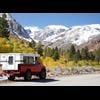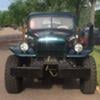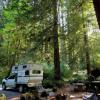Thanks to all for chiming in....first, I experimented with laying a rigid weight "east/west" [laterally] at 90* to top frame members....did not work, since frame to top sheet areas under that brace were at the frame height and top sheet had 'troughs' and 'peaks' below that frame to frame level. Still could pop and down. As suggested stiffening/dampening/weighting must hold down these 'troughs'/'peaks' which occur below frame height.
Reproducing tin canning is easy....press down with your hand on the top sheet in differing areas and quickly release the downward pressure; if it makes the tin canning racket then that area is going to tin can in a wind. I liken the top sheet to the swells on the ocean, vertical displacement up and down [swells/trough] flexes the aluminum and generates the noise. This does not occur over frame members but in between those supports.
I do not have sufficient knowledge to gauge if thin aluminum such as used on our top sheets can "stretch". I assume it has since I do not have any flat top sheet areas between top sheet frame members but areas of undulations that will move up and down with pressure changes. Hence it was originally loose and floppy or it has stretched. I believe it distorted/stretched over time with pressure loads from wind/snow or flexing while off road on tough tracts.
"Instead of Macgyvering a solution why not use a product engineered to attenuate vibrations?"
OK I am willing to use such a product....what would that product be? And how and where would you use it?
Vic...coming from the inside through the headliner might work if you place more insulation on top of existing insulation until you contact the areas tin canning...again stopping the up and down movement in the slack areas requires pressure on the top sheet...BIG project and one I could really mess up knowing my abilities. ![]()
Phil
Edited by Wallowa, 05 June 2023 - 08:28 PM.

















